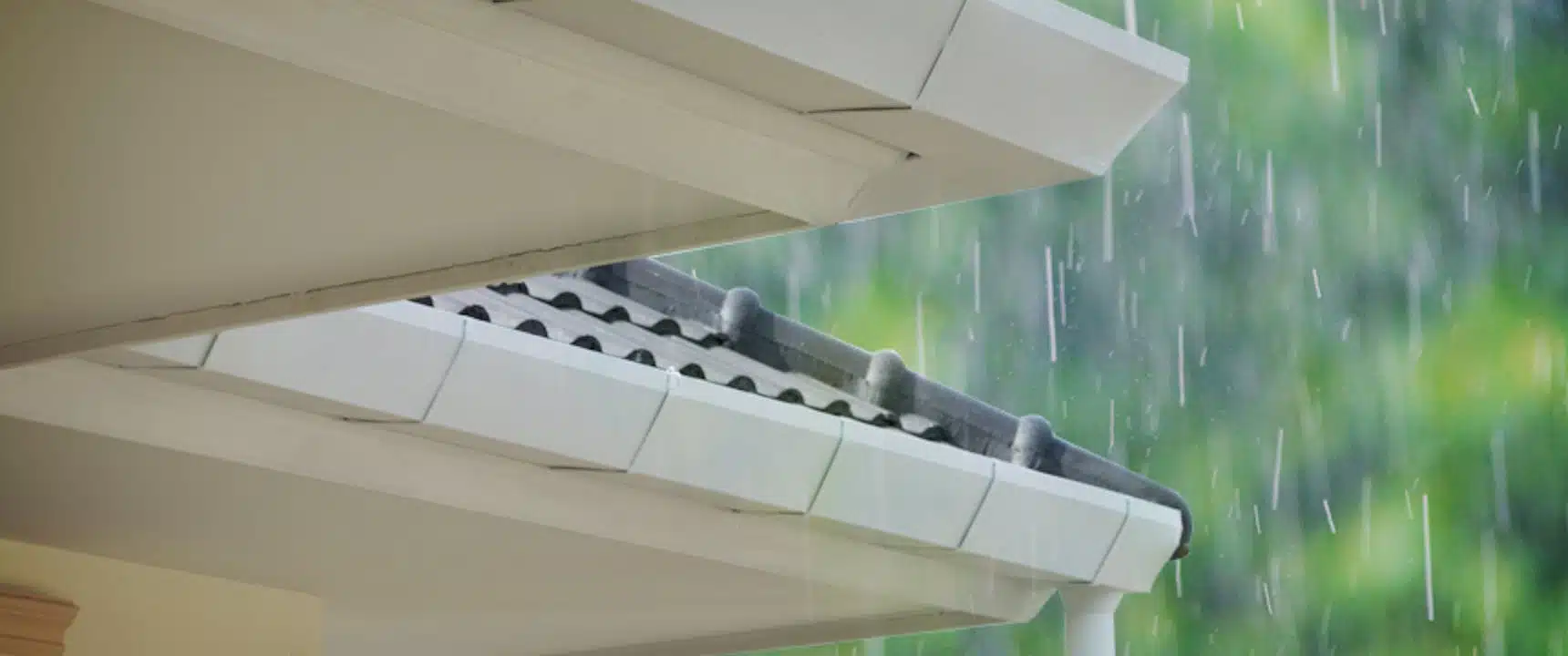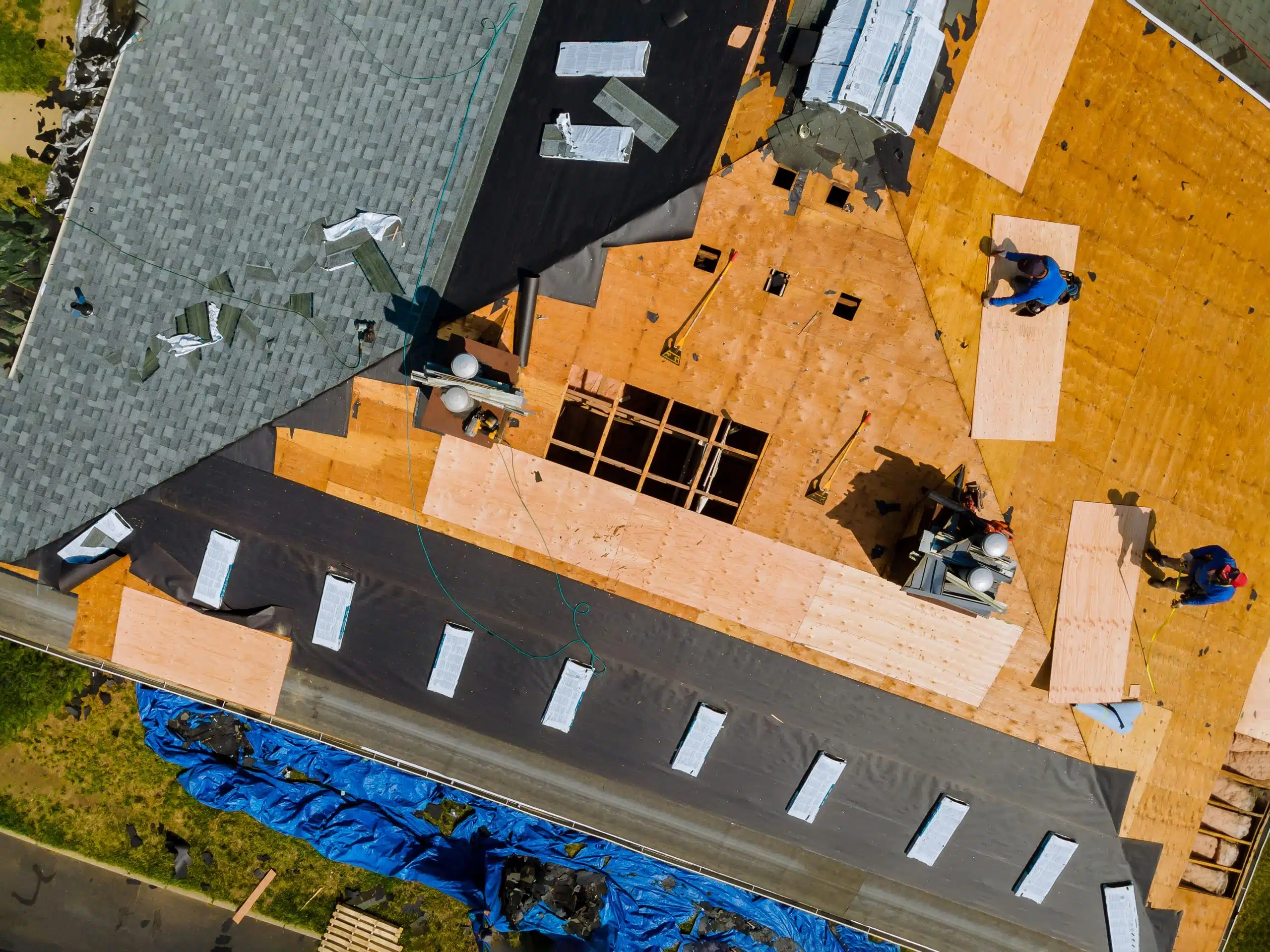
A well-maintained roof is essential for the longevity and protection of your home. Neglecting roof maintenance can lead to costly …

Let’s consider the fact that wind has contributed to unique land formations like the great Devils Tower. It has also moved massive ships across our seven oceans and continues to power hot air balloons and planes into the sky. The force of wind is not just a bunch of hot air, and its threat to the safety of your home should not be overlooked.
As National Geographic explains, if the sun heats up the Earth in an uneven pattern, it creates warm spots and cool spots. By nature, cool air rushes to the warm zone, thereby creating what we call wind.
There are different ranges of wind, all indicative of their strength and direction. The Beaufort Wind Force Scale outlines the various wind strengths from a calm force 0 (less than 1 mph) to a hurricane-level force 12 (73+ mph). The Beaufort scale describes force 8 to be what’s called a fresh gale of wind, blowing at 39-46 mph. This is when you’ll start to see pieces of trees breaking and blowing around. A strong gale of wind blows at 47-54 mph and becomes a bigger threat to your home, particularly the shingles on your roof. According to FEMA, your roof, along with your doors, windows and garage are the four most wind-damaged areas of a home.
Doors – Double-entry doors, specifically, are at risk during hurricane-speed gusts. With double-entry doors, you typically have one active door that opens and one that’s fixed. These types of doors often contain glass, which can break when winds run over 120 mph. With or without a window, doors can be pushed open and become a welcome invitation for water damage. If the storm doesn’t produce rain or flooding, wind coming into your home presses against your interior walls and roof. Like a pot of boiling water, the pressure eventually blows the top off.
Windows – Windows are another entry point for your home. Should winds blow at a force 12, unsecured windows are likely to break. Shattered glass blowing through your house is dangerous enough. But, again, an exposed entryway allows wind to access the inside of your home. This not only will cause damage to your personal belongings but tests the integrity of your roof.
Roof – FEMA studies have shown that a home’s roof is the most vulnerable to wind damage. If even one window or door has been compromised, wind can increase the uplift forces on the roof and literally blast it off of your house. The best case scenario would be you lose a few shingles. Sometimes, roof damage isn’t as obvious as a few missing shingles, though. Be sure to also inspect exhaust pipes, overhangs and where your roof meets walls. Calling a professional to check for hidden structural damage is always a smart move.
Garage – You may not have considered it, but your garage is also vulnerable to hurricane-speed winds. A double-garage door is riskiest, because the larger surface area captures more wind – like a sail on a boat. Winds of 120 mph or more can pull the garage door off its tracks or cause it to collapse to the pressure.
Once the storm has passed, carefully assess the damage all around your home. Light your path with a flashlight instead of candles, since it’s too early to tell if there are exposed gas lines. Keep away from sagging trees or broken limbs. And if a door, window or your roof has been punctured or removed, Storm Guard’s emergency tarping services can help prevent further destruction.

A well-maintained roof is essential for the longevity and protection of your home. Neglecting roof maintenance can lead to costly …

Between 2010 and 2013, approximately 48% of confirmed tornadoes touched down in April and May and were responsible for more …

There are numerous roofing materials on the market, and, much to the chagrin of homeowners, not all perform quite as …

The cost of a new roof in Texas will depend on the size of the home, the type of materials …

Roof Inspection Your roof is the first line of defense against most weather conditions, especially rain. Check your roof for …

Replacing a roof is an important investment for any homeowner or business owner. If damages have been found, more than …